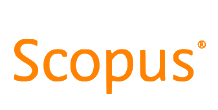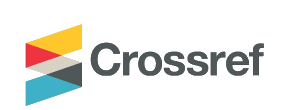Professional communication competence in English for occupational purposes (EOP) courses: A systematic literature review and proposal of a framework
DOI:
https://doi.org/10.21153/jtlge2021vol12no2art1075Abstract
This paper reports a systematic literature review that was conducted to explore the areas of research pertaining to English language workplace communication needs in order to design courses in English for Occupational Purposes (EOP) that can better meet the demands of the industry. Articles from Scopus, ScienceDirect and Emerald Insight were extracted following the five-step method of conducting a systematic literature review. In total, 133 articles were analysed. From the analysis, it was found that most studies focused on examining the needs of the learners, or the needs of the industry; very few studies triangulated the findings between different stakeholders to obtain a better picture of the needs, wants, and gaps between the target situation and the present situation. Additionally, most studies focused on language tasks required and did not pay due emphasis on the competencies required to perform the tasks well. Thus, the outcome of this review is a proposed theoretical model to develop professional communication competence among new graduates that is intended to be used in a future study to address the gaps found in this review. Practically, the review also sheds light on gaps that exist in current research that can be addressed in future research, especially for higher education institutions (HEIs) that are working to design and develop courses in EOP to improve English language communication skills for employability.
Metrics
References
Abdullah, A. G. K. (2013). Bridging the Gap Between Industry and Higher Education Demands on Electronic Graduates' competencies. IOSR Journal of Electrical and Electronics Engineering, 8(1), 63-68.
Abelha, M., Fernandes, S., Mesquita, D., Seabra, F., & Ferreira-Oliveira, A. T. (2020). Graduate Employability and Competence Development in Higher Education—A Systematic Literature Review Using PRISMA. Sustainability, 12(15). https://doi.org/10.3390/su12155900
Adnan, H. (2019). The Need to Provide English Communication Skills to the Engineers and the Quantity Surveyors. International E-Journal of Advances in Education, 5(13), 66-74.
Agus, A., Awang, A. H., Yussof, I., & Mohamed Makhbul, I. Y. (2011). The Gap Analysis of Graduate Employees' Work Skills in Malaysia. International Conference on Business Information, Bangkok, Thailand.
Ahmad Tajuddin, A. J., & Abdul Hamid, S. (2017). English for Workplace: What Do We Need to Teach? The Social Sciences, 12(7), 1257-1263.
Ahmmed, R., Sinha, B. S., Khan, D. R., & Islam, D. M. (2020). A needs analysis of maritime English language skills for Bangladeshi seafarers to work on-board ships. Marine Policy, 119. https://doi.org/10.1016/j.marpol.2020.104041
Akbari, Z. (2016). The Study of EFL Students' Perceptions of their Problems, Needs and Concerns over Learning English: The Case of MA Paramedical Students. Procedia - Social and Behavioral Sciences, 232, 24-34. https://doi.org/10.1016/j.sbspro.2016.10.006
Al-Buainain, H. A. (2011). Use of English by Graduates of Qatar University in the Workplace: A Quantitative Analysis. Arab World English Journal, 2(1), 140-185.
Alibakhshi, G., & Labbafi, A. (2021). Academic and real-life task-based language needs of marine engineering students: interface between students' and subject teachers' perspectives. Heliyon, 7(2), e05534. https://doi.org/10.1016/j.heliyon.2020.e05534
Alshabeb, A., Alsubaie, F., & Albasheer, A. (2017). English for Specific Purposes: A Study Investigating the Mismatch between the “Cutting Edge” Course Book and the Needs of Prince Sultan Air Base Students. Arab World English Journal, 8(3), 376-391. https://doi.org/10.24093/awej/vol8no3.24
Arumugam, N., & Kaur, N. (2011). Needs Analysis on the Importance of English Communication Skills for Medical Assistants. Journal of Institutional Research South East Asea, 9(1), 67-77.
Attan, A., Raof, A. H. A., Hamzah, M., Abdullah, K. I., & Omar, N. A. M. (2013). Developing a Profile of Workplace Written Communication. Procedia - Social and Behavioral Sciences, 70, 969-978. https://doi.org/10.1016/j.sbspro.2013.01.147
Bachman, L. F. (1990). Fundamental Considerations in Language Testing. Oxford University Press.
Baklazhenko, Y. V. (2018). English Language Learning Needs Analysis in Radioengineering Sphere. Information Technologies and Learning Tools, 64(2).
Belwal, R., Priyadarshi, P., & Al Fazari, M. H. (2017). Graduate attributes and employability skills. International Journal of Educational Management, 31(6), 814-827. https://doi.org/10.1108/ijem-05-2016-0122
Bhattacharyya, E. (2018). Structural Competence In Engineering Technical Oral Presentations – A Linguistic Dimension
Briner, R. B., & Denyer, D. (2012). Systematic Review and Evidence Synthesis as a Practice and Scholarship Tool. In D. M. Rousseau (Ed.), Oxford Handbook of Evidence-Based Management: Companies, Classrooms and Research. Oxford University Press. https://doi.org/10.1093/oxfordhb/9780199763986.013.0007
Brown, J. D. (2016). Introducing Needs Analysis and English for Specific Purposes. Routeledge.
Canale, M. (1983). From Communicative Competence to Communicative Language Pedagogy. In J. C. Richards & R. W. Schmidt (Eds.), Language and Communication. Taylor & Francis.
Canale, M., & Swain, M. (1980). Theoretical Bases of Communicative Approaches to Second Language Teaching and Testing. Applied Linguistics, I(1), 1-47. https://doi.org/10.1093/applin/I.1.1
Chan, M. (2014). Communicative Needs in the Workplace and Curriculum Development of Business English Courses in Hong Kong. Business and Professional Communication Quarterly, 77(4), 376-408. https://doi.org/10.1177/2329490614545987
Chastain, K. (1998). Developing Second Language Skills (2nd ed.). Harcourt Brace Publishers.
Cohen, D. J., & Crabtree, B. F. (2008). Evaluative criteria for qualitative research in health care: controversies and recommendations. Ann Fam Med, 6(4), 331-339. https://doi.org/10.1370/afm.818
D'Silva, V. (2020, February 3, 2020). More and more graduates are facing unemployment in Malaysia. New Straits Times. https://www.nst.com.my/news/nation/2020/02/562309/more-and-more-graduates-are-facing-unemployment-malaysia
Davies, N. F. (1980). Putting Receptive Skills First: An Experiment in Sequencing. The Canadian Modern Language Review, 36(3), 461-467.
Davies, N. F. (1982). Training Fluency: An Essential Factor in Language Acquisition and Use. RELC Journal, 13(1), 1013. https://doi.org/10.1177/003368828201300101
Dudley-Evans, T., & St John, M. J. (1998). Developments in English for Specific Purposes: A Multi-disciplinary Approach. Cambridge University Press.
Dzulkifly, D. (2018, 8 November 2018). Employers Blame Poor Communication, Language Skills for Unemployed Bumi Grads. Malay Mail.
Erling, E. J. (2015). The Relationship Between English and Employability in the Middle East and North Africa.
Fan, L., Fei, J., Schriever, U., & Fan, S. (2017). The communicative competence of Chinese seafarers and their employability in the international maritime labour market. Marine Policy, 83, 137-145. https://doi.org/10.1016/j.marpol.2017.05.035
Fareen, J. A. M. (2018). Job Focus: Revisiting Students’ Communicative Needs and Industrial Demands. Journal of Language and Education, 4(4), 42-53. https://doi.org/10.17323/2411-7390-2018-4-4-42-53
Gözüyeşil, E. (2014). An Analysis of Engineering Students’ English Language Needs. Procedia - Social and Behavioral Sciences, 116, 4182-4186. https://doi.org/10.1016/j.sbspro.2014.01.913
Hallinger, P. (2013). A conceptual framework for systematic reviews of research in educational leadership and management. Journal of Educational Administration, 51(2), 126-149. https://doi.org/10.1108/09578231311304670
Hanapi, Z., & Nordin, M. S. (2014). Unemployment among Malaysia Graduates: Graduates’Attributes, Lecturers’ Competency and Quality of Education. Procedia - Social and Behavioral Sciences, 112, 1056-1063. https://doi.org/10.1016/j.sbspro.2014.01.1269
Hee, S. C., & Zainal, A. Z. (2018). Analysing the English Communication Needs of Service Technicians in the Pest Control Industry. Pertanika Journal of Social Sciences and Humanities, 26(2), 1079-1095.
Hellekjær, G. O., & Fairway, T. (2015). The mismatch between the unmet need for and supply of occupational English skills: an investigation of higher educated government staff in Norway. Higher Education, 70(6), 1033-1050. https://doi.org/10.1007/s10734-015-9882-x
Hutchinson, T., & Waters, A. (1987). English for Specific Purposes: A Learning-centred Approach. Cambridge University Press.
Hymes, D. H. (1972). On communicative competence. In J. B. Pride & J. Holmes (Eds.), Sociolinguistics. Penguin.
Jackson, D. (2010). An international profile of industry-relevant competencies and skill gaps in modern graduates. The International Journal of Management Education, 8(3), 29-58. https://doi.org/10.3794/ijme.83.288
Kaburise, P. (2016). Improving soft skills and communication in response to youth unemployment. International Journal of African Renaissance Studies - Multi-, Inter- and Transdisciplinarity, 11(2), 87-101. https://doi.org/10.1080/18186874.2016.1248061
Karimi, P., & Sanavi, R. V. (2014). Analyzing English Language Learning Needs among Students in Aviation Training Program. Procedia - Social and Behavioral Sciences, 98, 852-858. https://doi.org/10.1016/j.sbspro.2014.03.491
Kementerian Pendidikan Malaysia. (2013). Malaysian Education Blueprint 2013-2025.
Kenayathulla, H. B., Ahmad, N. A., & Idris, A. R. (2019). Gaps between competence and importance of employability skills: evidence from Malaysia. Higher Education Evaluation and Development, 13(2), 97-112. https://doi.org/10.1108/heed-08-2019-0039
Khan, K. S., Kunz, R., & Kleijnen, J. (2003). Five steps to conducting a systematic review. Journal of the Royal Society of Medicine, 96, 118-121.
Knapp, K., Perrin, D., & Verspoor, M. (Eds.). (2017). Handbook of Business Communication: Linguistic Approaches. Walter de Gruyter Inc.
Lim, J. (2004, 11 July 2004). Varsity-industry Mismatch. The Star Online. https://www.thestar.com.my/news/education/2004/07/11/varsityindustry-mismatch
Liu, J.-Y., Chang, Y.-J., Yang, F.-Y., & Sun, Y.-C. (2011). Is what I need what I want? Reconceptualising college students’ needs in English courses for general and specific/academic purposes. Journal of English for Academic Purposes, 10(4), 271-280. https://doi.org/10.1016/j.jeap.2011.09.002
Lu, Y.-L. (2018). What do nurses say about their English language needs for patient care and their ESP coursework: The case of Taiwanese nurses. English for Specific Purposes, 50, 116-129. https://doi.org/10.1016/j.esp.2017.12.004
Malaysian Qualifications Agency, M. (2017). Malaysian Qualifications Framework.
Masduki, M., & Zakaria, N. (2020). Fulfilling the Demand for Workplace Communication Skills in the Civil Engineering Industry. Pertanika Journal of Social Sciences and Humanities, 28(4). https://doi.org/10.47836/pjssh.28.4.32
Mohamad, F., Abdullah, N., Ahmad Buhari, T., Mat Daud, N. S., Ramlan, Z. S., & Teoh, S. A. (2020). Establising Predictive Validity of English Exit Test: Students' EET Performance and Academic Achievement. International Journal of Modern Languages and Applied Linguistics, 4(1), 57-66.
Moslehifar, M. A., & Ibrahim, N. A. (2012). English Language Oral Communication Needs at the Workplace: Feedback from Human Resource Development (HRD) Trainees. Procedia - Social and Behavioral Sciences, 66, 529-536. https://doi.org/10.1016/j.sbspro.2012.11.297
Munby, J. (1978). Communicative Syllabus Design: A sociolinguistic model for defining the content of purpose-specific language programmes. Cambridge University Press.
Palea, A., Ciobanu, G., & Kilyeni, A. (2012). Educational Skills in Training Landscape Architecture Students: Developing Communication Skills. Procedia - Social and Behavioral Sciences, 46, 4672-4677. https://doi.org/10.1016/j.sbspro.2012.06.316
Panyawong-Ngam, L., Tangthong, N., & Anunvrapong, P. (2015). A Model to Develop the English Proficiency of Engineering Students at Rajamangala University of Technology Krungthep, Bangkok, Thailand. Procedia - Social and Behavioral Sciences, 192, 77-82. https://doi.org/10.1016/j.sbspro.2015.06.012
Ranasuriya, D. L., & Herath, S. M. (2020). A Needs Analysis on the language skills required by the industry from vocational graduates. Sri Lanka Journal of Social Sciences, 43(2). https://doi.org/10.4038/sljss.v43i2.7932
Sari, L. I., & Sari, R. H. (2020). Exploring English Language Needs of Indonesian Marine Pilots: A Need Analysis and Its Implications in ESP Classrooms. TransNav, the International Journal on Marine Navigation and Safety of Sea Transportation, 14(4), 909-917. https://doi.org/10.12716/1001.14.04.15
Sarudin, I., Noor, Z. M., Zubairi, A. M., Ahmad, T. B. T., & Nordin, M. S. (2013). Needs Assessment of Workplace English and Malaysian Graduates’ English Language Competency. World Applied Sciences Journal, 21(Special Issue of Studies in Language Teaching and Learning), 88-94. https://doi.org/10.5829/idosi.wasj.2013.21.sltl.2141
Savignon, S. J. (1972). Communicative Competence: An Experiment in Foreign-Language Teaching. Center for Curriculum Development.
Singh, A. K. J., & Raja Harun, R. N. S. (2020). Industrial trainees learning experiences of English related tasks at the workplace. Studies in English Language and Education, 7(1), 22-42. https://doi.org/10.24815/siele.v7i1.16064
Singh, P., Thambusamy, R. X., & Ramly, A. (2014). Assessing Graduates’ Generic Skills: An Indicator of Employability. Pertanika Journal of Social Sciences and Humanities, 22(3), 845-860.
Spence, P., & Liu, G.-Z. (2013). Engineering English and the high-tech industry: A case study of an English needs analysis of process integration engineers at a semiconductor manufacturing company in Taiwan. English for Specific Purposes, 32(2), 97-109. https://doi.org/10.1016/j.esp.2012.11.003
Thomas, A., Piquette, C., & McMaster, D. (2016). English communication skills for employability: the perspectives of employers in Bahrain. Learning and Teaching in Higher Education: Gulf Perspectives, 13(1). https://doi.org/10.18538/lthe.v13.n1.227
Ting, S.-H., Marzuki, E., Chuah, K.-M., Misieng, J., & Jerome, C. (2017). Employers’ Views on Importance of English Proficiency and Communication Skill for Employability in Malaysia. Indonesian Journal of Applied Linguistics, 7(2). https://doi.org/10.17509/ijal.v7i2.8132
University of Cambridge Local Examinations Syndicate. (2016). English at Work: Global Analysis of Language Skills in the Workplace. U. o. C. L. E. S. (UCLES). http://englishatwork.cambridgeenglish.org/
Van Ek, J. A. (1976). Significance of the Threshold Level in the Early Teaching of Modern Languages. Council of Europe.
Wilson Mwakapina, J. (2020). Communication Skills Course in Bridging the Gap of Weak Students’ Communicative Competence and Accentuating Performance: A Case of Sokoine University of Agriculture. International Journal of Language and Linguistics, 8(1). https://doi.org/10.11648/j.ijll.20200801.11
Yao, Y., & Du-Babcock, B. (2020). English as a Lingua Franca in China-Based Workplace Communication: A Mixed Approach to a Comparison of Perceived Communicative Needs. Asociación Europea de Lenguas para Fines Específicos.
Zainuddin, S. Z. B., Pillai, S., Dumanig, F. P., & Phillip, A. (2019). English language and graduate employability. Education + Training, 61(1), 79-93. https://doi.org/10.1108/et-06-2017-0089












